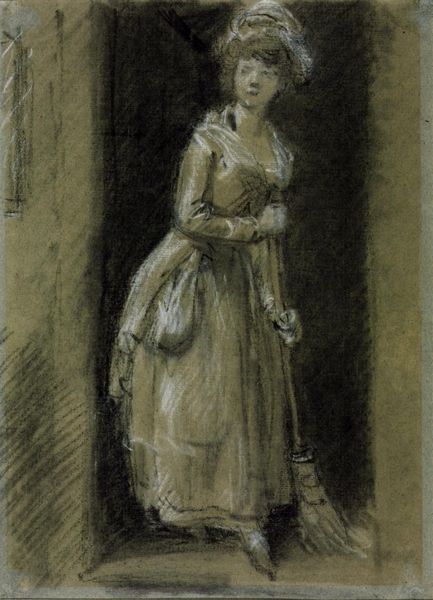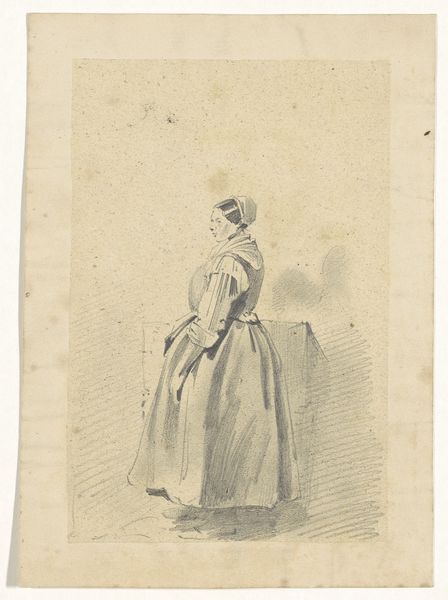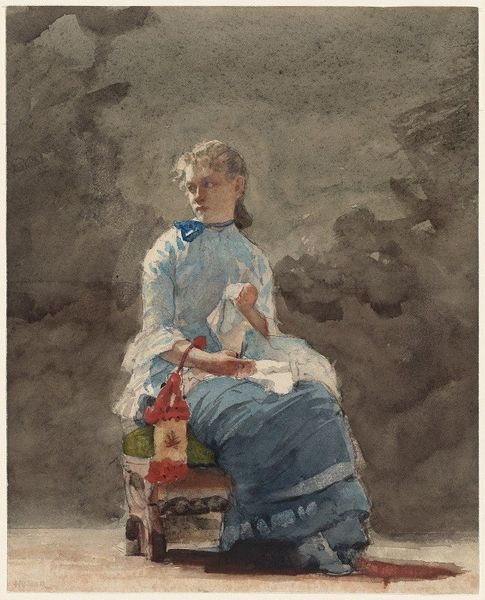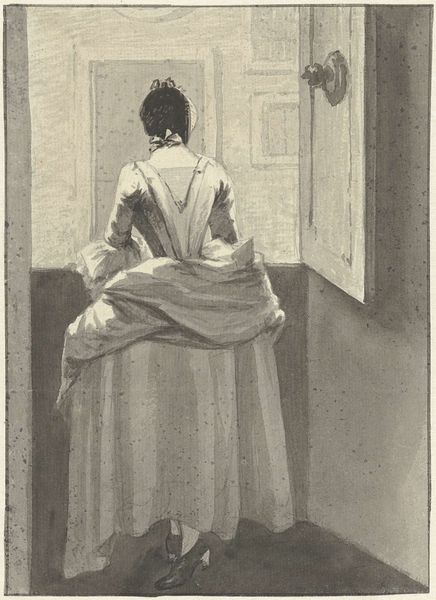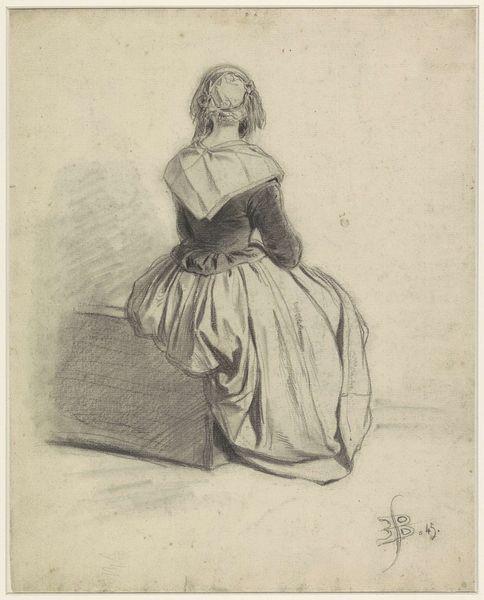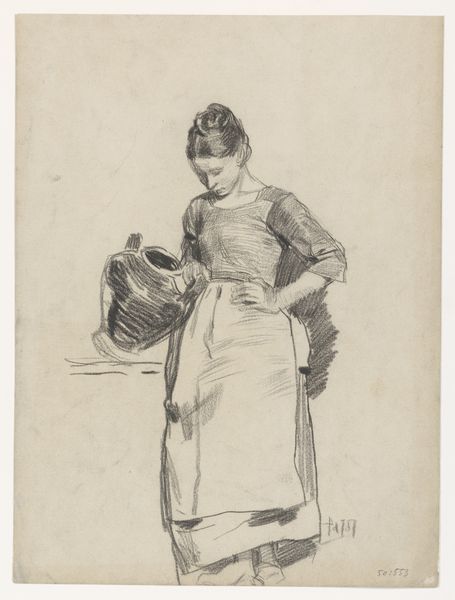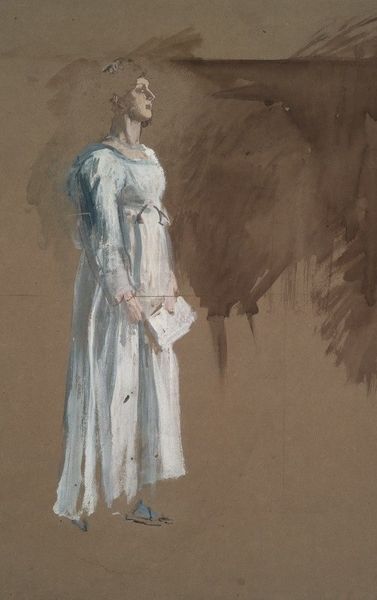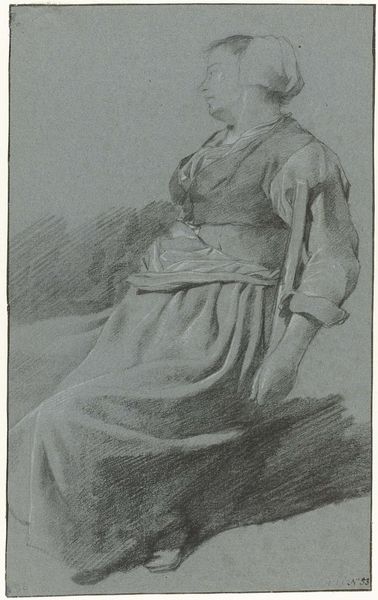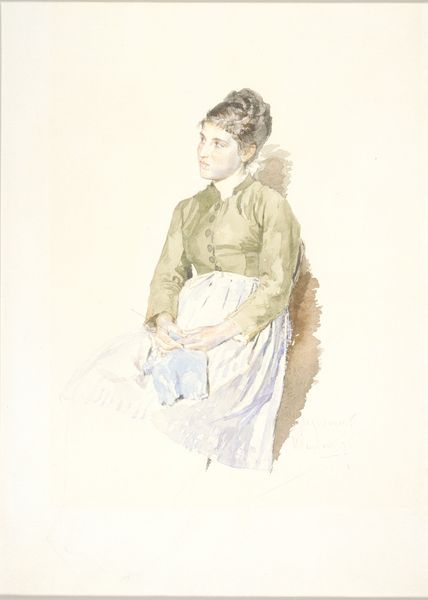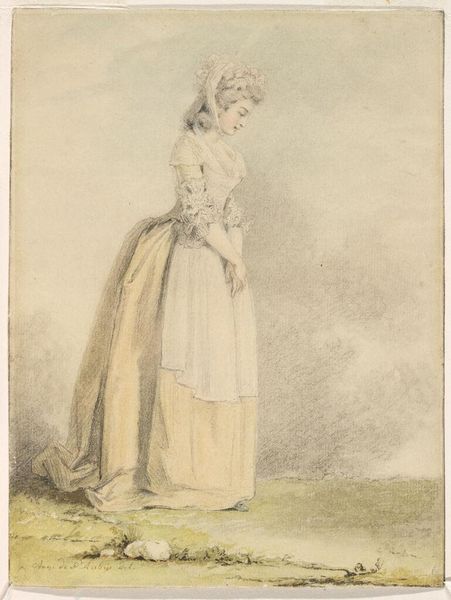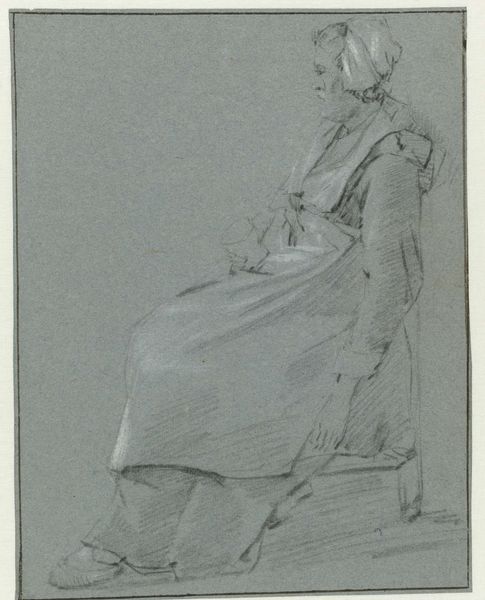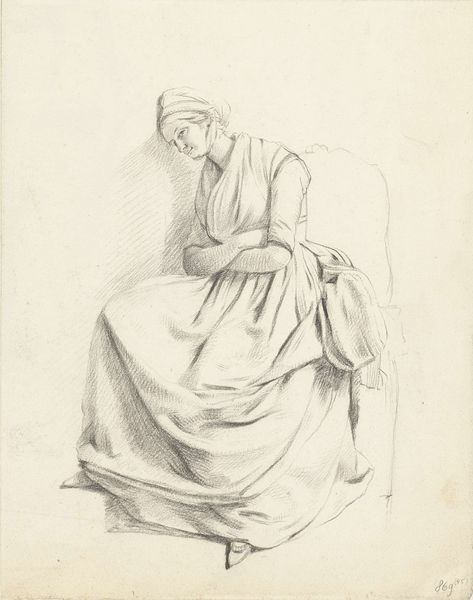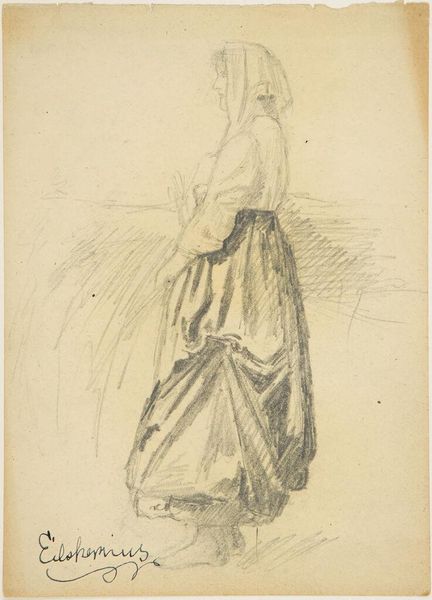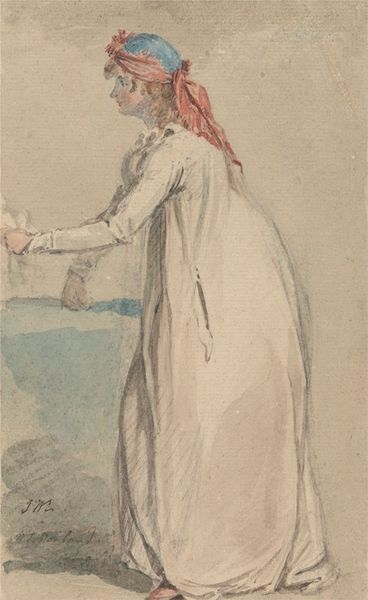
painting, watercolor
#
portrait
#
figurative
#
painting
#
watercolor
#
academic-art
#
mixed media
#
watercolor
#
realism
Copyright: Public Domain: Artvee
Curator: Winslow Homer's watercolor from 1877, "Blackboard," presents a fascinating glimpse into rural education. The painting primarily employs watercolor but some may consider the integration of materials on the page itself "mixed media". It's incredibly evocative, don't you think? Editor: Absolutely. It has that wistful quality you find in a sepia-toned photograph. There's this quiet energy, like she’s on the cusp of some realization, but the overall palette seems rather desaturated to convey excitement... What shapes are these in front of the chalkboard anyway? Curator: Yes, the subdued tones are deliberate, fostering a sense of contemplation. Let's look more closely at that "Blackboard": it's more than just a chalkboard, really, it's an interesting blend of geometry with some sort of symbol, something like an early proto-digital graphic representation. The shapes evoke a connection to literacy. Editor: Ah, like learning a new alphabet! It's hitting me. Education equals progress. Is that what Homer implies? Also, I see the angle of her holding the stick towards these primitive letter figures to look like almost an aggressive thrusting in these shapes... I think Homer captured what is essentially an aggression, the act of taking someone and imposing upon them some form of imposed literacy? Curator: The pointer in her hand certainly gives the image a sharp sense of direction and instruction, but aggression may be taking the analysis a bit too far! Beyond any pedagogical context, there’s also the apron and its gingham patterns that symbolize a domestic ideal—contrasting perhaps with intellectual endeavor. What interests me is how the artist uses symbolism to subtly question and subvert any one message within that tableau, for a multi-valent reading, and this relates very powerfully to Homer's practice in this moment. It all seems very intentional to reflect different class structures and the difficulty in reconciling an intellectual life in one realm with a more constrained domestic space... Editor: That's an astute interpretation. The setting does lend itself to that notion of constrained horizons as opposed to an expansive, educated one. Overall I think there's something to it of not romanticizing a difficult stage in a woman's life but seeing what she can be and perhaps might have wanted to become as she stood, suspended, caught in an awkward in-between in gender, power, education... and painting her not for her potential or aspirations as some object to consider for these desires or these futures, but as a monument to some moment, is interesting to see here. Curator: Indeed. By dissecting symbols, Homer doesn't provide answers, he makes us ask the difficult and very necessary questions about cultural impositions! Editor: Well, it makes you appreciate this piece all the more when it does so many different things without pushing it too hard in a pedantic and doctrinaire kind of way, huh.
Comments
No comments
Be the first to comment and join the conversation on the ultimate creative platform.
